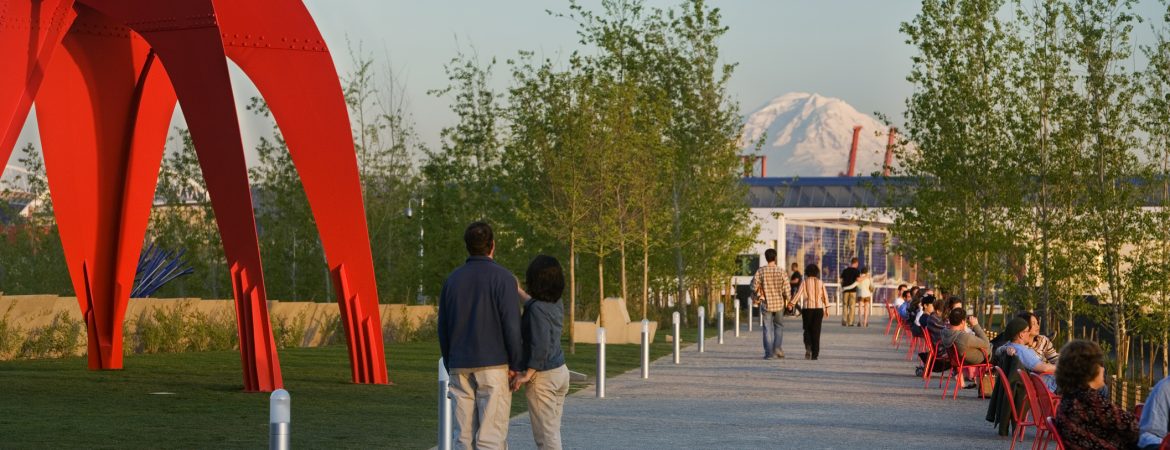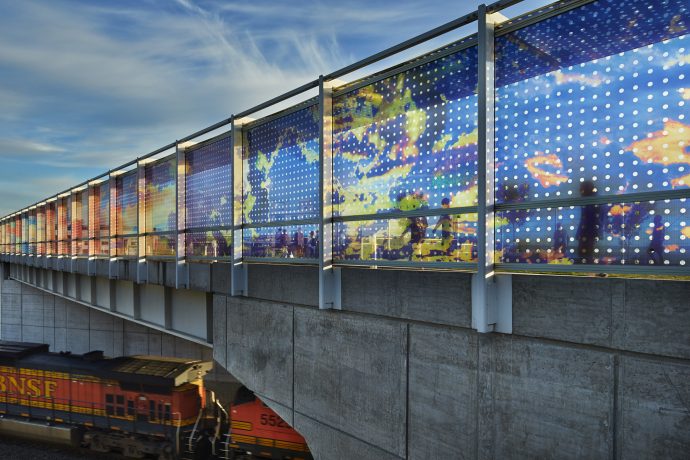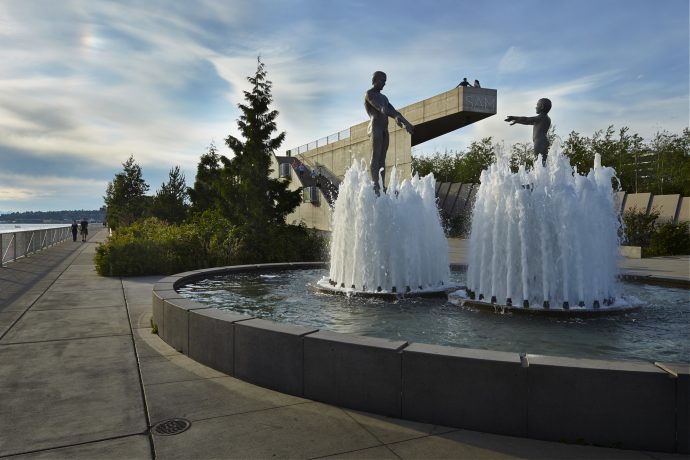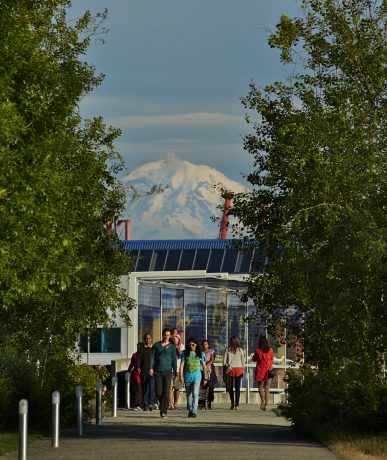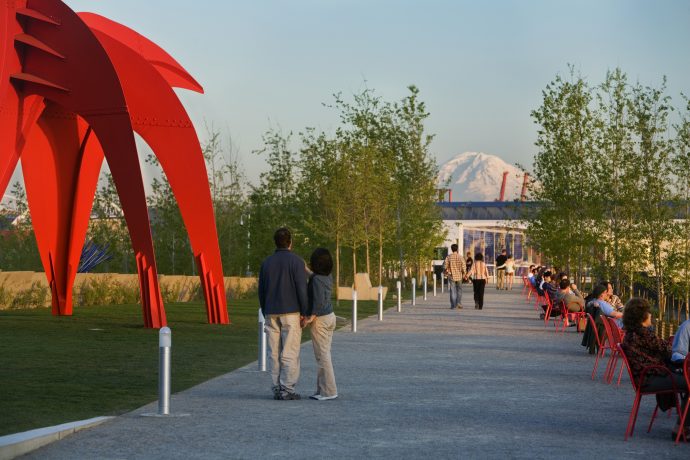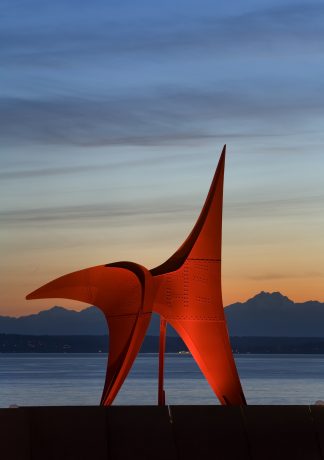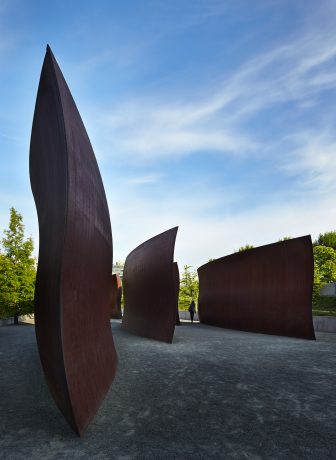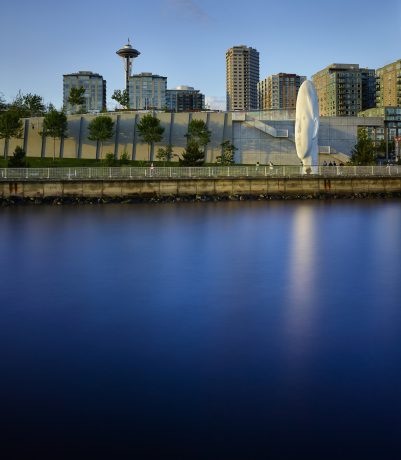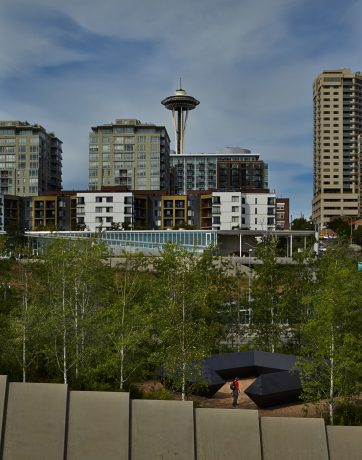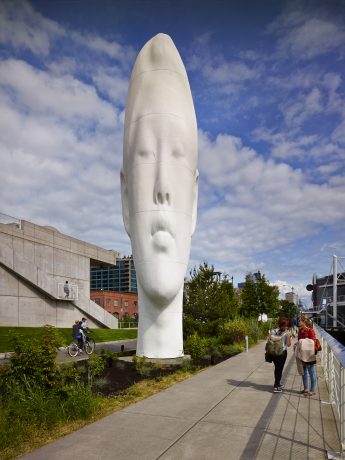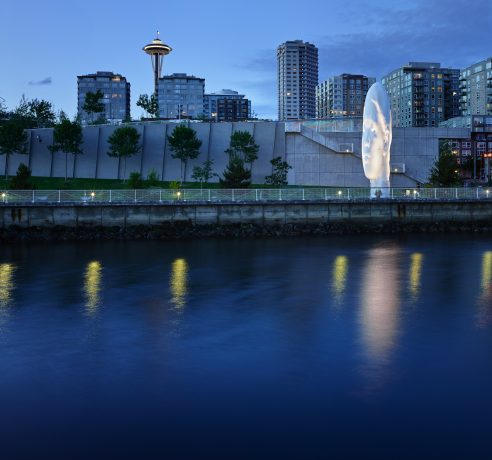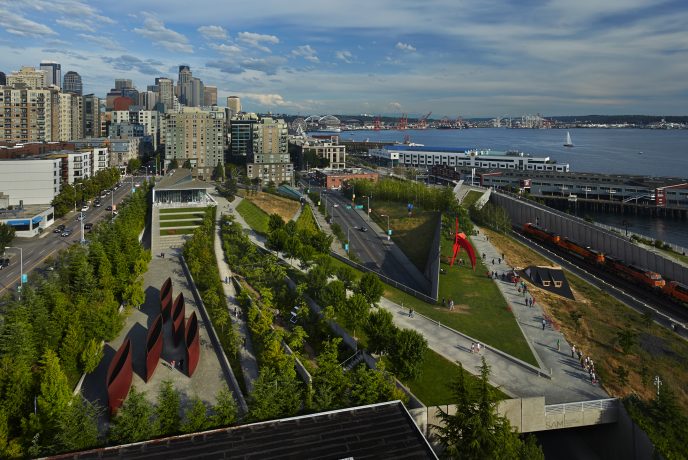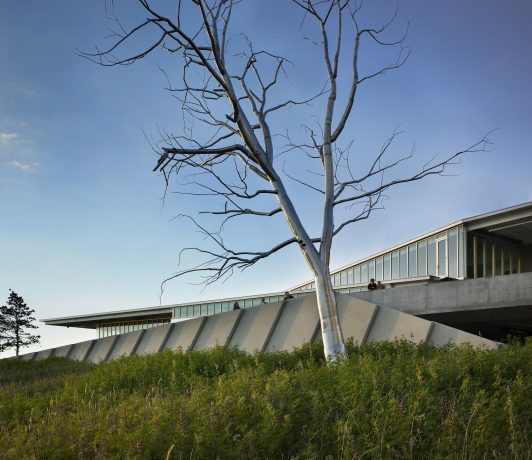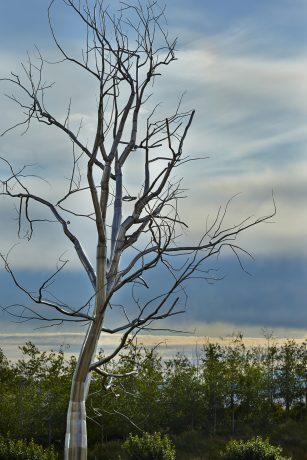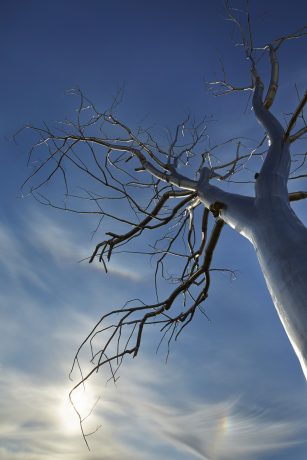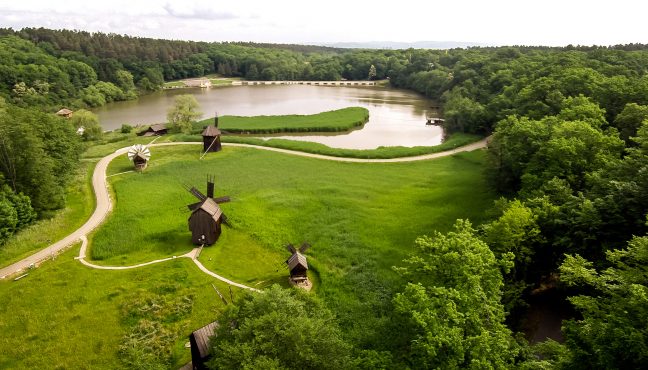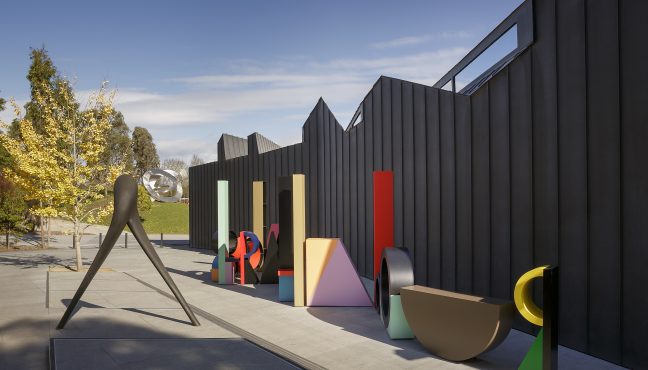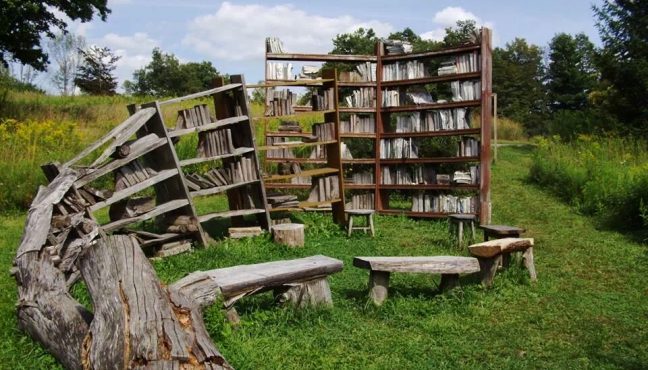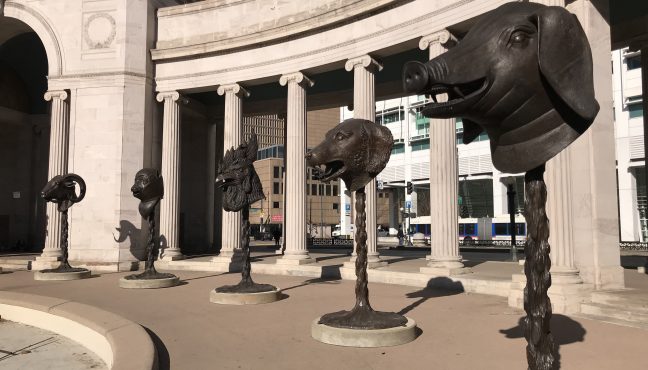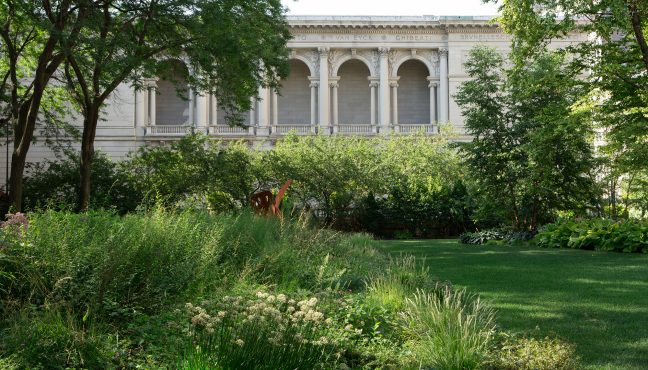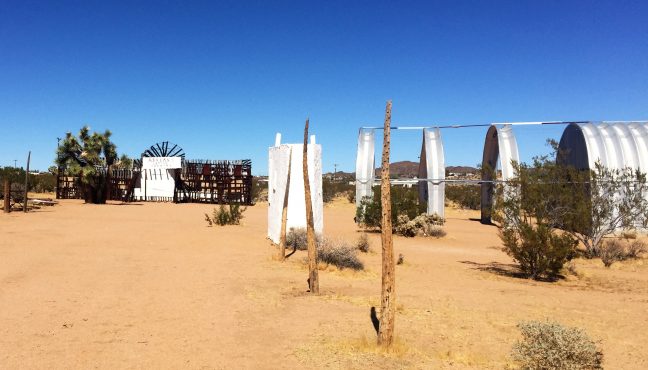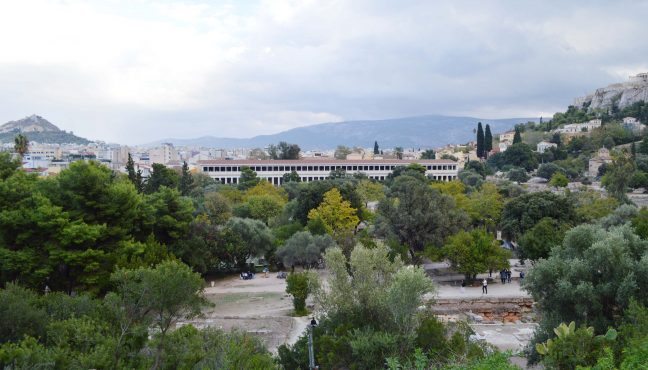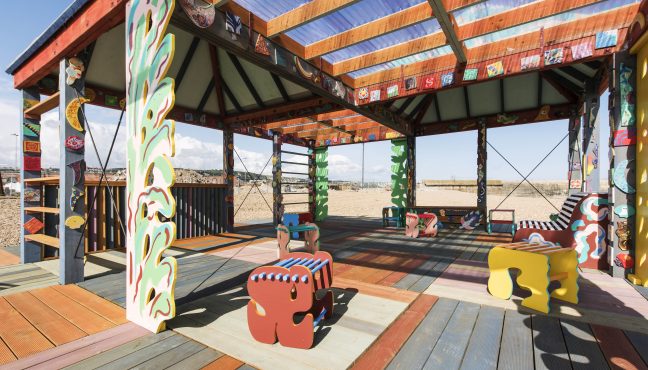For major urban cities, parks provide residents and visitors alike a wonderful place to escape from the skyscrapers, traffic and noise surrounding them. Some of these parks, such as New York’s Central Park, San Francisco’s Golden Gate Park and London’s Hyde Park, offer large open spaces filled with all sorts of things to discover within them. Similarly, although much smaller, Seattle’s relatively new Olympic Sculpture Park (founded in 2007) provides the Pacific Northwest city with an urban park decorated with contemporary sculptures in its vibrant downtown area.
Located on the banks of Elliot Bay in famous Puget Sound, the free 9-acre park is named for Washington’s majestic Olympic Mountain range just west of Seattle. While the Olympic Sculpture Park is a branch of the nearby Seattle Art Museum, admission to the park is free and does not require a ticket to the museum itself.
The park is located approximately a mile northeast of the Seattle Art Museum and less than a mile southeast of city’s most famous landmark, the Space Needle. Several other museums, such as the Museum of Pop Culture, Chihuly Garden and Glass and Pacific Science Center, are also located nearby. Despite being surrounded by so many other fabulous museums and art spaces, the Olympic Sculpture Park sets itself apart through its colorful sculpture collection and outdoor waterfront location. This gives visitors a chance to enjoy the blending of contemporary sculptures and the outdoors together (at least on days when it isn’t raining, as it often is in Seattle).
The ground now used for the Olympic Sculpture Park was originally owned by Unocal (Union Oil Company of California), but you would never realize this when you see it. Today, the contaminated oil pollutants have been removed and the area is a clean natural space filled with green grass and a rocky shoreline. Altogether, Seattle’s conversion of this area resulted in a new park for the public to enjoy, a place for displaying public art and the cleanup of an environmental blight.
Sculptures on display at the Olympic Sculpture Park span the decades from the 1960s through the present. For example, the earliest permanent sculpture on display is Mark di Suvero’s Bunyon’s Chess from 1965, while Ginny Ruffner’s Mary’s Invitation: A Place to Regard Beauty is from 4 years ago in 2014. Many of the park’s sculptures, such as Bunyon’s Chess, were created years ago and originally displayed elsewhere until their relocation to the Olympic Sculpture Park. I find it quite interesting to examine the similarities and differences in contemporary sculptural design and style from the park’s earlier ones to the more recent additions.
One popular sculpture to look for is Echo by Jaume Plensa (2014). Standing at over 45 feet tall, the solid white head depicting the sculpture’s namesake from ancient Greek mythology, Echo the nymph, is nearly impossible to miss. Although not quite as abstract as some of the other sculptures, Echo still maintains a distinct contemporary look that illustrates the style for which the Olympic Sculpture Park is all about.
Besides its outdoor space, the Olympic Sculpture Park also includes an indoor building called the PACCAR Pavilion. Both the park and its PACCAR Pavilion structure were designed by the same architectural firm, Weiss/Manfredi. Because of this, the artistry and contemporary architectural design of the PACCAR Pavilion merges into its surroundings and does not look out of place, despite being surrounded by open-air green space and contemporary sculptures. One of the best examples of this is the fact that there is a parking garage underneath the PACCAR Pavilion, but you would not realize it until you got close to it. Weiss/Manfredi’s exquisite landscape architecture hides the garage from afar and blends it together with the contemporary design of the structure. The PACCAR Pavilion is much more than a parking garage or spot to step inside for a bit though. Inside, visitors can browse the SAM SHOP or have lunch at TASTE Café. Ultimately, Weiss/Manfredi’s PACCAR Pavilion not only provides a home for the park’s parking garage, gift shop and café, but also a work of both architectural and landscape art to see and admire in its own right as well.
In a busy area of Seattle packed with tall buildings, popular local restaurants, luxury apartments and pavement everywhere you look, the Olympic Sculpture Park provides a welcome spot to take a break and enjoy the outdoors. On the other hand, as a sculpture park, it provides fans of contemporary sculpture something to look at and contemplate as walk through the park’s pathways. So next time you visit the Seattle Art Museum, the Space Needle, Pike Place Market or one of the many nearby museums, do not forget about the nearby Olympic Sculpture Park as well!
